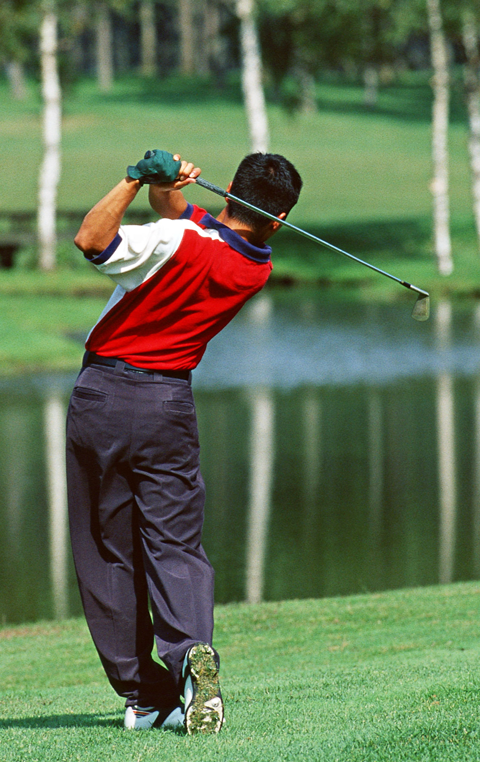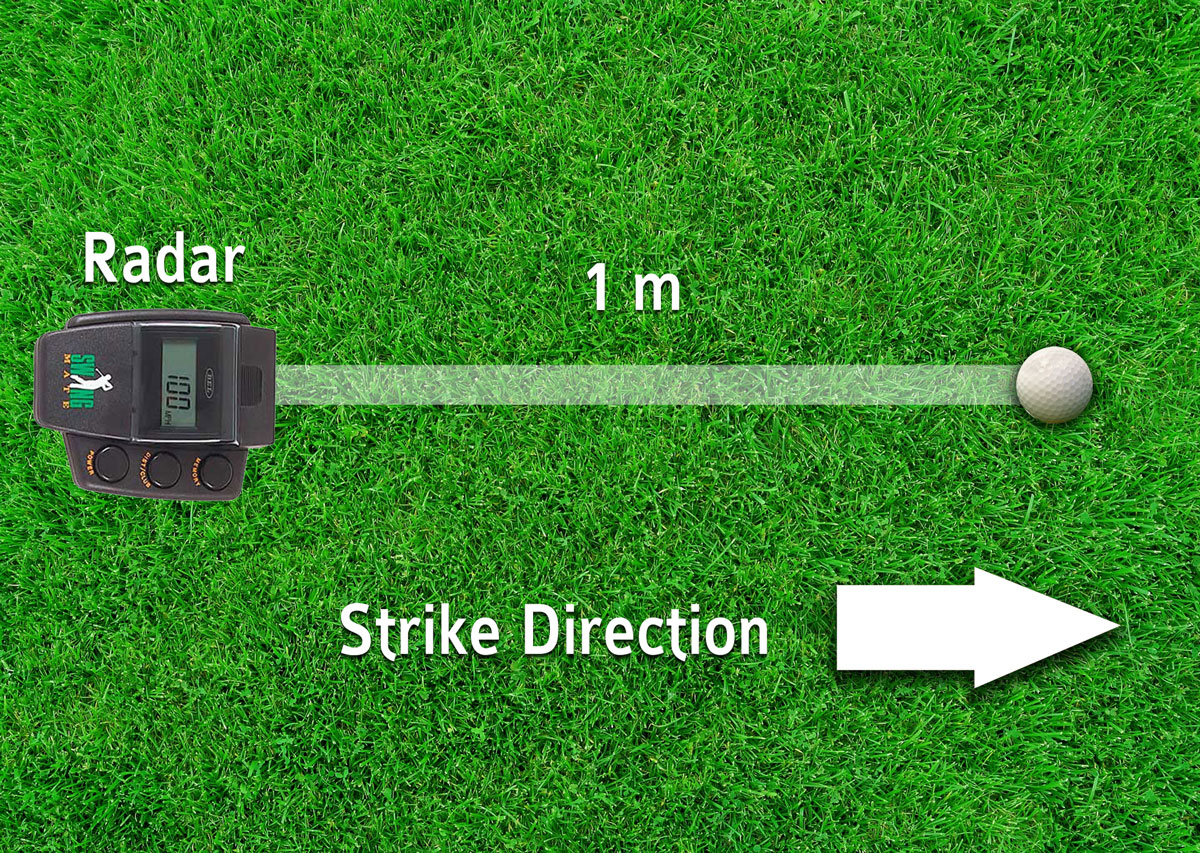

Figure 1. The swing.
Golf is a sport where the technical, tactical and psychological aspects are inherent to a good performance. Naturally, golfers have always preferred technical work rather than purely physical and muscular aspects. The rapid evolution of the materials used to design the clubs and the balls also contributed to accentuate this work of control of the gesture and the equipment.
Nevertheless, for a little more than a decade, various teams of researchers have been interested in physical training in golf and tried to understand and to determine the impact of the muscular work during the swing (Fig. 1) on the performance on the green (ie, the golf course).
This research highlighted the importance of club head speed (CHS) at the moment of impact with the ball. CHS is highly correlated with the golfer's handicap, the more the golfer will be good and the higher the CHS will be. And so, the distance to which the ball will be sent depends in part on CHS. Moreover, several studies have shown that the strength and muscular power of the upper body can have a beneficial effect on CHS. However, the identification of the exercises and training modes that would be best suited to golf performance remain to be done.
In 2009, a team of US researchers from the University of Pennsylvania investigated the relationship between trunk flexibility, muscle power, muscle strength and CHS during swing. For this, 15 golfers (including 14 right-handed and 1 left-handed) with a handicap of less than or equal to 8 participated in this study.
After a standardized warm-up, each golfer has done different tests :
Golf club head velocity at impact (i.e., CHS in m/s) : A radar measured CHS and was placed 1m behind the ball (Fig. 2). All golfers used the same type of club (Iron #5) and each golfer did 5 tries. For there to be few changes in the technique of each, golfers did not know the speed of each test.
Trunk flexibility : It has been evaluated on a weight training device designed for horizontal rotations of the trunk. No resistance was needed. The golfers were sitting on the machine. The goal was to turn the trunk as far as possible.
Power of rotation of the body : Using a 3 kg medicine ball, golfers had to imitate the gesture of swing with the aim of launching the medicine ball as far as possible.
Muscle strength of the chest : To evaluate this parameter, the American researchers tested the 8RM of the golfers on a machine "Pec Deck". This type of machine makes it possible to isolate the work of the major pectoralis.

Figure 2. Setting up the radar to measure the club head speed at the impact.
From these data, Pearson-Bravais correlations were performed to statistically determine the nature of the relationships between chest muscle strength, trunk rotational power, trunk flexibility, and CHS.
The results of the statistical tests show that there is a significant correlation between CHS and medicine ball (r = 0.54) and between CHS and chest muscle strength (r = 0.69). No significant correlation was found between CHS and trunk flexibility.
These relationships between pectoral muscle strength, body rotational power, and CHS seem to indicate that physical conditioning work focused on these components could improve the speed of swing and hence the distance the ball travels. Obviously, such hypotheses remain to be demonstrated on a longitudinal study. In addition, it remains to be determined whether the exercise used in this study to assess the strength of the chest is best suited to represent the strength develop during the golf swing (even though it presents the best statistical correlation).
The authors specify that several studies have shown that a complete muscular work of the body allows an improvement of the CHS. So, it might be interesting to include in the training program the two exercises used in this study.
The research on physical training in golf have the merit of highlighting the interest of a specific muscular work to allow the improvement of the performance of the swing. The two exercises proposed in this study are simple in learning and easy to implement in any training routine.
We remind you that you can quote articles by limiting your quotation to 200 words maximum and you must include a nominative link to this one. Any other use, especially copying in full on forum, website or any other content, is strictly prohibited. In doubt, contact us.
Copyright © 2011-2024 - www.sci-sport.com - All rights reserved